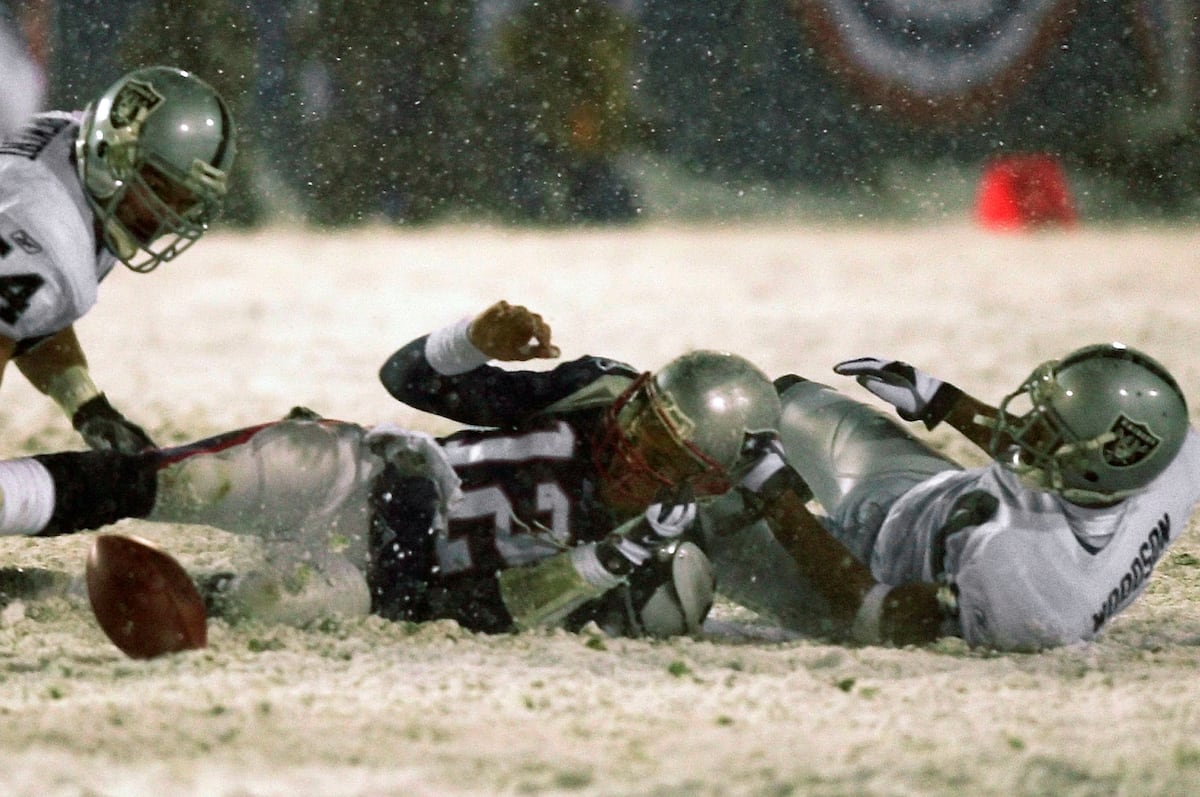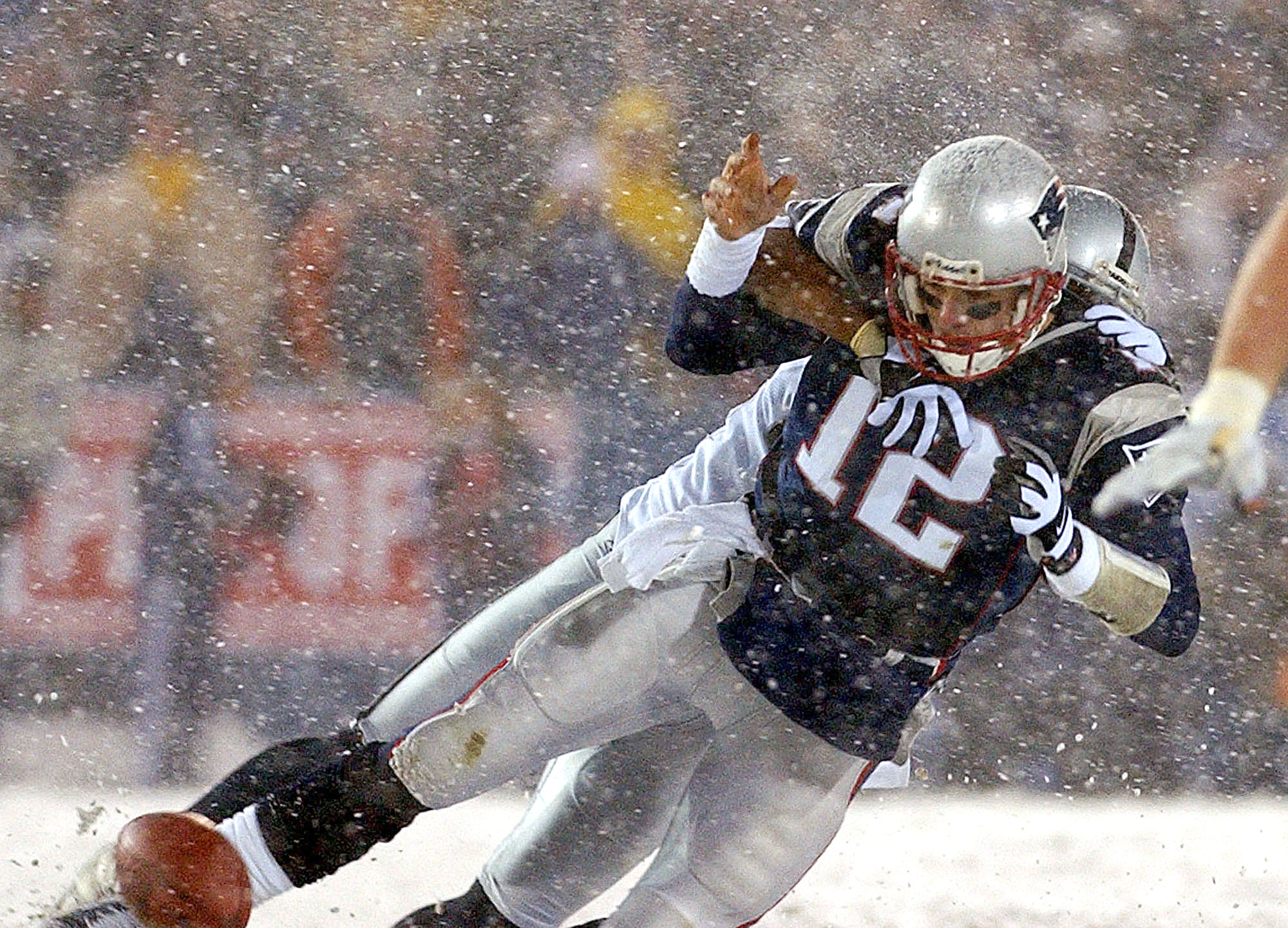The Tuck Rule: Origins, Controversy, And Impact On Modern Football
Few concepts in the history of professional football have sparked as much debate and intrigue as the "tuck rule." A seemingly simple rule buried within the pages of the NFL’s official rulebook, it has nonetheless etched its place in football lore, thanks to its controversial application in pivotal moments of the game. The tuck rule, while no longer part of the NFL rulebook, continues to be a hot topic among fans, analysts, and players alike. Understanding its origins, implementation, and eventual removal sheds light on how a single ruling can alter the trajectory of games, careers, and even the league’s history.
The tuck rule first came into the spotlight during a cold January playoff game in 2002 between the New England Patriots and the Oakland Raiders. This one ruling, which overturned what appeared to be a fumble, not only changed the outcome of the game but also served as a catalyst for the Patriots' dynasty under quarterback Tom Brady. The widespread controversy it generated forced fans and experts to scrutinize the rulebook and question the fairness and clarity of the rule itself.
Though the rule was officially abolished in 2013, its legacy endures as a testament to how the smallest technicalities in sports can have far-reaching consequences. In this article, we’ll dive deep into the history, application, and eventual elimination of the tuck rule, while exploring its broader implications on the sport of football. From its origin story to its cultural significance, we’ll cover all you need to know about this infamous regulation and why its memory refuses to fade away.
- The Ultimate Guide To Cedar City Food A Culinary Haven In Southern Utah
- Astella Apartments A Modern Haven For Urban Living
Table of Contents
- What is the Tuck Rule?
- Origins of the Tuck Rule
- How Did the Tuck Rule Impact the NFL?
- The Tuck Rule Game Controversy
- Why Was the Tuck Rule Abolished?
- Key Moments Involving the Tuck Rule
- How Did the Tuck Rule Affect Tom Brady?
- Public Reaction to the Tuck Rule
- What Are the NFL Rules on Fumbles and Passes Now?
- Lessons Learned from the Tuck Rule
- How Did the Tuck Rule Influence Rule Changes?
- Tuck Rule vs. Modern Technology
- Is the Tuck Rule Missed Today?
- Frequently Asked Questions
- Conclusion
What is the Tuck Rule?
The tuck rule was a provision in the NFL rulebook that defined when a quarterback loses possession of the football as an incomplete pass versus a fumble. According to the rule, if a quarterback begins a forward motion of the ball (commonly referred to as the "tuck" motion) and subsequently loses possession, it is considered an incomplete pass, not a fumble. This distinction has significant implications because a fumble can lead to a turnover, whereas an incomplete pass allows the offense to retain possession.
This rule applied only in situations where the quarterback’s arm was moving forward and the ball had not yet been fully tucked back into his body. If the ball was lost after the tucking motion was complete, it would indeed be ruled as a fumble. While the rule aimed to provide clarity, its subjective nature often led to disputes, particularly in high-stakes games where a single call could determine the outcome.
Origins of the Tuck Rule
The tuck rule was introduced in 1999 and was initially intended to address ambiguities in determining whether a quarterback’s forward motion constituted a pass or a fumble. Before the rule’s implementation, referees often struggled to make consistent calls in real-time scenarios, leading to confusion and controversy. By codifying the criteria for a forward pass versus a fumble, the NFL hoped to standardize rulings and reduce disputes on the field.
- Andrew Vladimir Dunayevskiy A Visionary Leader And Innovator
- Top Reasons To Visit Red Rocks Colorado For Unforgettable Experiences
However, the rule was not without its critics even in its early years. Many felt it added unnecessary complexity to the game and allowed too much room for interpretation. Despite these concerns, the tuck rule remained relatively obscure until it gained national attention during the infamous 2002 AFC Divisional Playoff game, often referred to as "The Tuck Rule Game."
How Did the Tuck Rule Impact the NFL?
The tuck rule’s impact on the NFL cannot be overstated. It brought attention to the nuances of the rulebook and highlighted the importance of clear, unambiguous regulations. The rule also emphasized the critical role of referees in interpreting and enforcing these rules during games.
One of the most significant impacts of the tuck rule was its role in shaping the career of Tom Brady and the New England Patriots’ dynasty. The Patriots’ victory in the 2002 playoff game, aided by the controversial application of the tuck rule, marked the beginning of an era of dominance for the team. Critics argue that without the tuck rule, the outcome of that game—and perhaps the trajectory of Brady’s career—might have been drastically different.
The Tuck Rule Game: What Happened?
The 2002 AFC Divisional Playoff game between the New England Patriots and the Oakland Raiders is where the tuck rule gained its notoriety. Late in the fourth quarter, with the Patriots trailing by three points, Tom Brady appeared to fumble the ball after being hit by Raiders cornerback Charles Woodson. The Raiders recovered the ball, seemingly sealing their victory.
However, upon review, the referees invoked the tuck rule, ruling that Brady’s arm was in a forward motion and the play was therefore an incomplete pass. This controversial decision allowed the Patriots to retain possession, eventually leading to a game-tying field goal and an overtime victory. The Patriots would go on to win the Super Bowl that year, cementing Brady’s legacy and sparking heated debates about the fairness of the tuck rule.
Why Was the Tuck Rule Abolished?
The tuck rule was abolished in 2013 after years of criticism and controversy. The NFL’s Competition Committee voted overwhelmingly to remove the rule, acknowledging that it was overly complicated and often led to confusion. The decision was also influenced by advancements in video replay technology, which allowed referees to make more accurate calls without relying on subjective interpretations of the tuck rule.
In its place, the NFL clarified the definitions of a forward pass and a fumble, aiming to simplify the rulebook and reduce the potential for contentious rulings. While the tuck rule is no longer part of the game, its legacy lives on as a reminder of the importance of clear and concise regulations in professional sports.
Key Moments Involving the Tuck Rule
Beyond the 2002 playoff game, the tuck rule has been invoked in several other notable instances, though none as impactful. These moments have further fueled debates about the rule’s validity and its role in the game. For example:
- A 2001 regular-season game where the rule was applied to overturn a fumble by then-Jets quarterback Vinny Testaverde.
- A 2007 game between the Detroit Lions and Chicago Bears, where the rule was controversially enforced.
Each of these instances demonstrates the rule’s ability to influence the outcome of games and underscores why its abolition was ultimately welcomed by many in the football community.
Frequently Asked Questions
1. What was the purpose of the tuck rule?
The tuck rule aimed to clarify when a quarterback’s loss of possession should be ruled as an incomplete pass versus a fumble, focusing on the forward motion of the ball.
2. Why was the tuck rule controversial?
The rule was controversial because of its subjective nature and its ability to significantly impact game outcomes, as seen in the 2002 AFC Divisional Playoff game.
3. When was the tuck rule abolished?
The tuck rule was officially removed from the NFL rulebook in 2013 after a vote by the league’s Competition Committee.
4. How did the tuck rule affect Tom Brady’s career?
The tuck rule played a pivotal role in the Patriots’ victory in the 2002 playoff game, which marked the beginning of Tom Brady’s legendary career and the Patriots’ dynasty.
5. What replaced the tuck rule?
The NFL clarified the definitions of a forward pass and a fumble, simplifying the rulebook and reducing the potential for contentious rulings.
6. Is the tuck rule missed in today’s NFL?
While some fans miss the drama it brought to the game, most agree that its removal has improved the clarity and fairness of the sport.
Conclusion
The tuck rule serves as a fascinating case study in the complexities of professional sports regulations. Though it was intended to provide clarity, its subjective nature often led to confusion and controversy. Its abolition in 2013 marked the end of an era, yet its legacy endures as a reminder of how a single rule can shape the history of a sport.
From its origins to its role in the Patriots’ dynasty, the tuck rule remains a topic of discussion among football fans and analysts. While the NFL has moved on with clearer and simpler rules, the memory of the tuck rule—and the debates it sparked—will continue to be a part of football lore for years to come.
- Freck Beauty Redefining Skincare And Makeup For A Modern World
- Peters Bakery San Jose A Sweet Tradition Of Quality And Taste

We Remember 13th Anniversary of RaidersPatriots 'Tuck Rule' Game

Tuck Rule Game Alchetron, The Free Social Encyclopedia